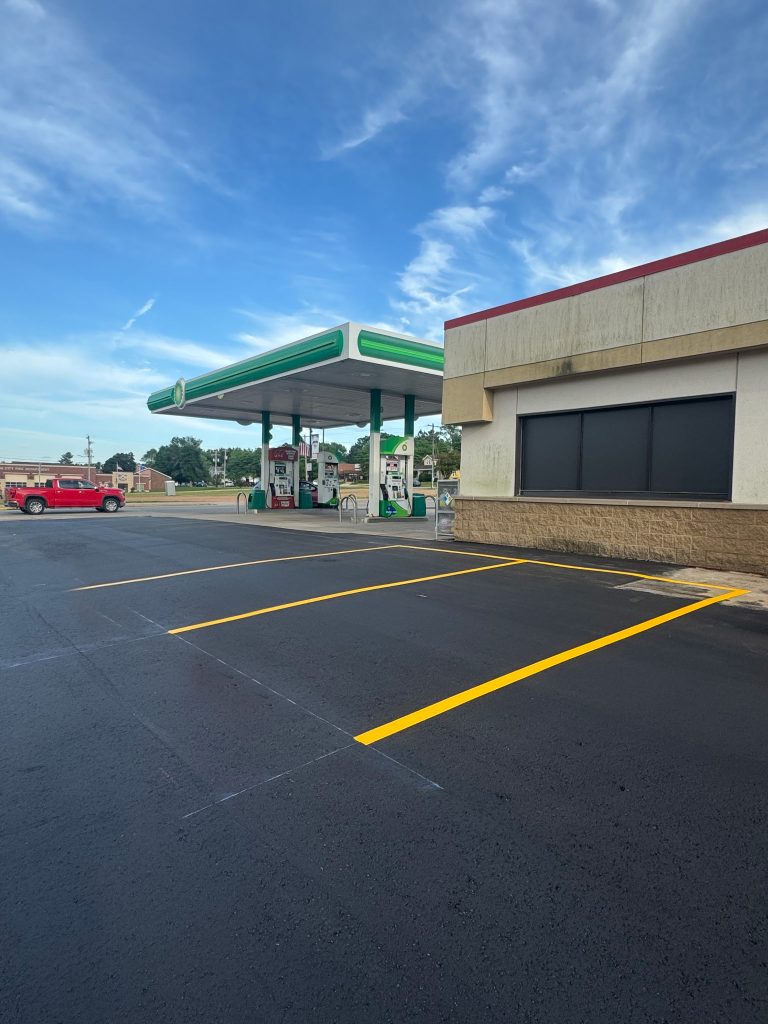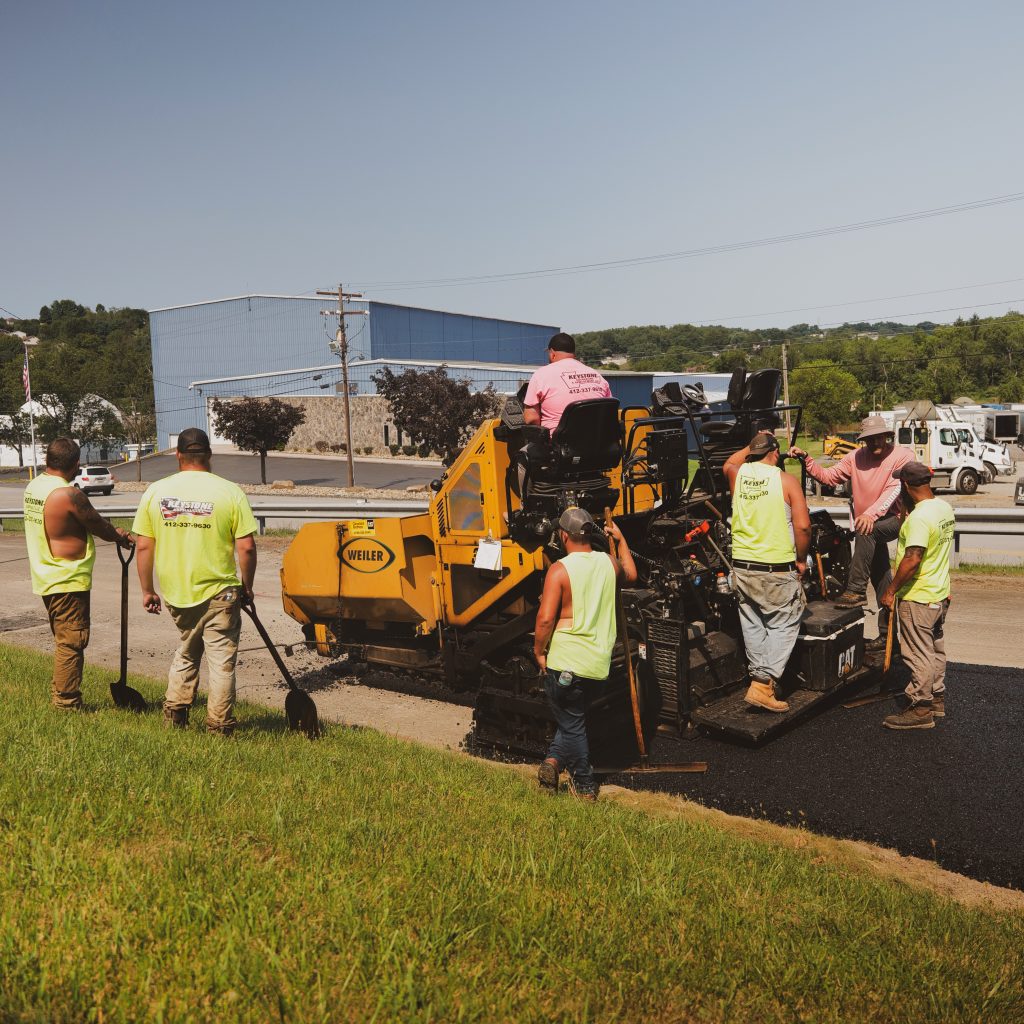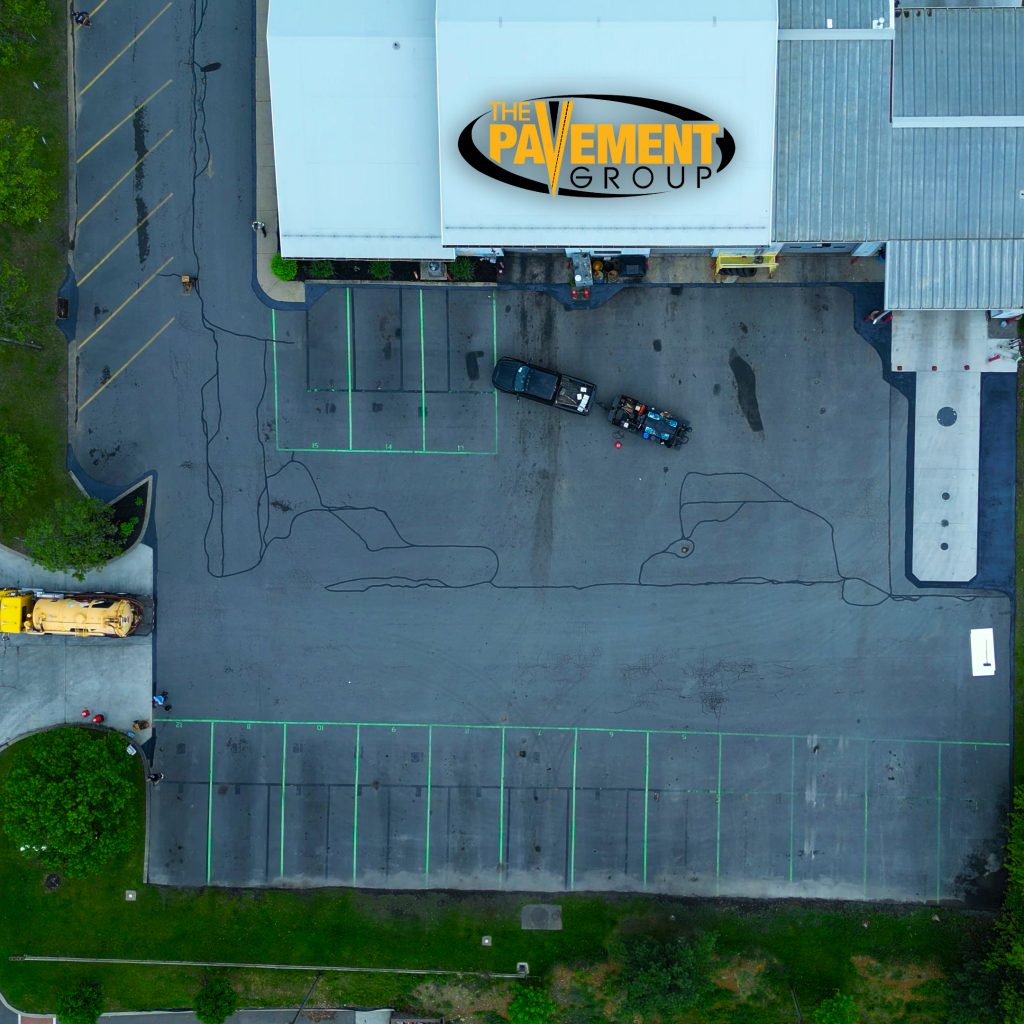Many property managers focus on asphalt repairs and sealcoating. They overlook a crucial safety factor which is the lighting. Effective parking lot lighting plays a major role in pavement safety and overall site performance.
Whether your property serves retail shoppers, employees, or delivery fleets, visibility determines how safe and comfortable your visitors feel. Let’s explore how lighting and pavement design work together to create a safer, more efficient parking environment.
Why Lighting Is Connected to Parking Lot Safety
Proper lighting does more than illuminate asphalt. It prevents accidents, discourages crime, and improves driver confidence. Poorly lit lots can cause minor fender benders, slips, and even serious injuries.
Studies show that parking areas with uniform lighting experience fewer pedestrian accidents and vehicle collisions. When drivers can clearly see pavement markings, curbs, and signage, they make safer, faster decisions.
How Poor Lighting Affects Pavement Performance
Without sufficient illumination, small cracks or potholes often go unnoticed. These issues can grow quickly, leading to costly repairs or liability claims.
In commercial sites, delivery trucks and service vehicles rely heavily on visibility. When drivers can’t see pavement edges or drainage areas, they’re more likely to cause surface damage. Consistent lighting allows maintenance crews to spot wear early and schedule timely repairs.
The Ideal Lighting Setup for Safe Parking Lots
Lighting design isn’t one-size-fits-all. Each property has unique needs based on size, traffic volume, and operating hours. Still, a few principles apply across the board:
- Uniform illumination: Avoid dark patches or glare spots that distort visibility.
- LED efficiency: Modern LED fixtures offer bright, consistent light while cutting energy costs.
- Strategic pole placement: Position lights to highlight entry points, crosswalks, and high-traffic areas.
- Smart controls: Motion sensors and timers optimize energy use and reduce maintenance.
Professional lighting assessments can determine optimal placement and brightness levels for your property. The right plan can make a noticeable difference in both safety and appearance.
Why Lighting and Pavement Work Hand in Hand
Lighting and pavement are partners in safety. Reflective striping, clean asphalt, and visible crosswalks all rely on adequate lighting. Even the best pavement marking system is useless in the dark.
When you combine new lighting with resurfacing or sealcoating, your property gets a complete visual upgrade. Customers notice the difference instantly. The lot feels safer, cleaner, and easier to navigate.
Safety Upgrade That Changed Everything
A large retail center in the Midwest recently learned how transformative lighting can be. Their lot had uneven lighting, frequent potholes, and growing customer complaints about visibility at night.
During their pavement rehabilitation project, our team recommended a lighting redesign to complement the new asphalt overlay. LED poles were installed at all key entrances, intersections, and loading zones.
After completion, the property saw:
- A 40% reduction in minor vehicle accidents.
- A significant drop in nighttime security incidents.
- Improved customer satisfaction scores across all tenants.
The client reported that even their insurance provider took notice of the safety improvements. A simple lighting upgrade became a long-term win for everyone involved.
The Hidden ROI of Lighting Improvements
Lighting might seem like an expense, but it’s actually a cost-saving investment. Here’s why:
- Reduced liability: Fewer accidents mean lower insurance premiums and claims.
- Extended pavement life: Better visibility allows faster maintenance response.
- Improved energy efficiency: LED systems reduce electricity usage and maintenance costs.
- Enhanced property value: A well-lit, safe environment attracts more tenants and customers.
When lighting is part of your pavement management strategy, you create a balanced approach to safety, aesthetics, and long-term savings.
A Local Focus on Safer Commercial Properties
In busy retail areas and industrial zones, nighttime activity never stops. Trucks move goods, employees change shifts, and customers visit late. Lighting plays a critical role in maintaining flow and safety.
Local regulations in many regions now encourage property owners to maintain minimum lighting levels for parking facilities. Compliance isn’t just good practice. It’s often required by municipal safety codes.
Partnering with an experienced pavement contractor ensures your lighting design aligns with both safety and regulatory standards.
Testimonial: A Property Manager’s Experience
“When we resurfaced our shopping center’s parking lot, our contractor suggested updating the lighting too. Honestly, I didn’t think it mattered much. But once the project finished, the difference was unbelievable. Customers immediately commented on how bright and safe it felt at night. We even had fewer complaints about visibility and traffic flow. Now, I’ll never separate lighting and pavement upgrades again. They go hand in hand.”
— Jennifer L., Retail Property Manager, Pittsburgh
How to Get Started with a Lighting and Pavement Safety Plan
Upgrading your parking lot lighting begins with an assessment. Evaluate your current illumination, identify dark zones, and measure light levels against safety standards.
Next, align the lighting plan with upcoming pavement work. Coordinating both projects reduces downtime and costs. Finally, choose sustainable materials and LED systems that perform well over time.
Safety isn’t about one upgrade. It’s about a unified strategy that combines light, structure, and maintenance.
Ready to Brighten Up Your Property?
Your parking lot should inspire confidence, not concern. Investing in both lighting and pavement safety creates a welcoming and secure environment for everyone who visits your property.
Let’s build brighter, safer parking lots together. Contact us today to schedule your site assessment and discover how smart design enhances safety, efficiency, and long-term savings.
Frequently Asked Questions
1. How does parking lot lighting improve pavement safety?
Proper parking lot lighting enhances visibility for drivers and pedestrians, reducing the risk of accidents and property damage. Bright, evenly distributed lighting helps highlight pavement markings, curbs, and obstacles. This increased visibility makes navigation safer, especially at night or during poor weather conditions.
2. Why is lighting important for commercial parking lot safety?
Lighting plays a vital role in maintaining safety for vehicles and pedestrians in commercial parking lots. Well-lit spaces deter criminal activity and reduce the chances of falls or collisions. Businesses that invest in adequate lighting also improve customer confidence and overall property appeal.
3. What are the risks of poor lighting in parking lots?
Poor lighting increases the likelihood of accidents, including tripping hazards and vehicle collisions. Dim or uneven lighting can obscure pavement damage and make pedestrians less visible. These conditions can lead to higher liability risks and reduced customer satisfaction.
4. How does lighting affect pavement maintenance?
Good lighting allows maintenance crews to detect cracks, potholes, or drainage issues early. This proactive visibility helps extend pavement life and reduces costly repairs. It also ensures that maintenance tasks can be safely performed during evening hours.
5. What type of lighting is best for parking lot safety?
LED lighting is the most recommended option for modern parking lots due to its brightness and energy efficiency. It provides consistent illumination and lasts longer than traditional bulbs. LEDs also reduce maintenance costs while meeting safety and visibility standards.
6. Can parking lot lighting help reduce accidents?
Yes, consistent and properly placed lighting significantly reduces the number of parking lot accidents. Drivers can better see pedestrians, curbs, and other vehicles. Studies show that improved lighting directly correlates with fewer nighttime collisions and incidents.
7. How does lighting design impact parking lot visibility?
A well-designed lighting layout ensures uniform brightness across the entire lot. Proper pole height and spacing prevent dark spots and glare, improving depth perception. This thoughtful design helps both drivers and pedestrians move safely and confidently.
8. Does lighting influence pavement markings visibility?
Yes, good lighting makes pavement markings like arrows, crosswalks, and stop lines more visible at night. Reflective paint works best under bright LED lighting. Clear visibility of markings leads to safer traffic flow and better navigation.
9. How often should parking lot lighting be inspected?
Lighting systems should be inspected at least twice a year to ensure full functionality. Routine inspections help identify burnt-out bulbs, broken fixtures, or electrical issues early. Consistent maintenance keeps both illumination and safety standards high.
10. What is the connection between lighting upgrades and property value?
Upgraded parking lot lighting enhances curb appeal and safety, increasing overall property value. Tenants and customers feel more comfortable in well-lit areas. Additionally, energy-efficient systems lower operational costs, providing long-term financial and aesthetic benefits.


